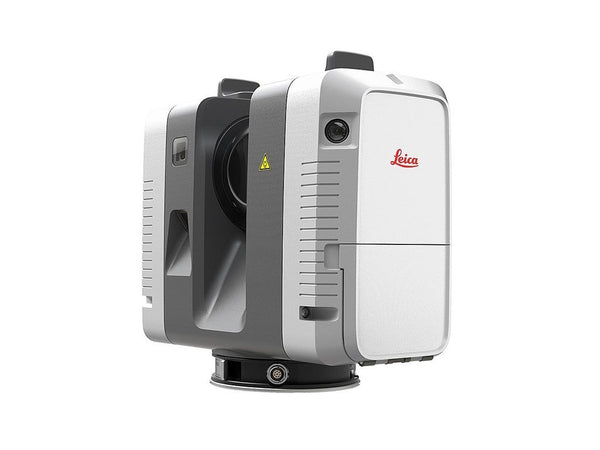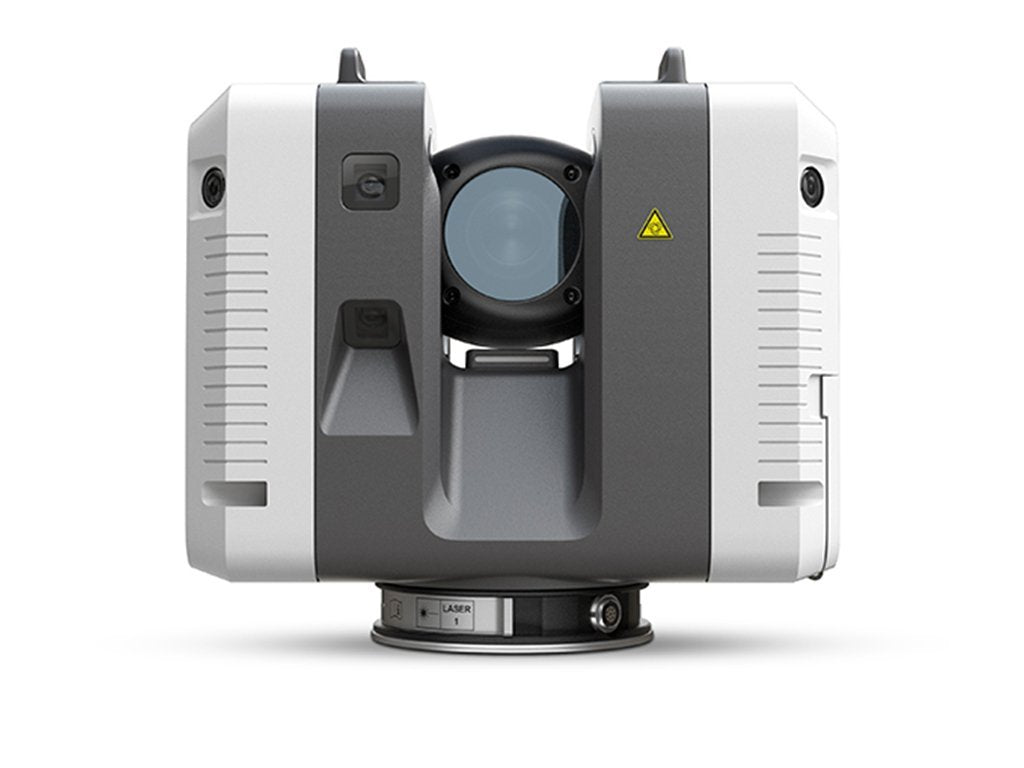Step-by-Step Guide to Using 3D Scanning in Design Projects
Wiki Article
Enhancing Production Processes: The Influence of 3D Laser Scanning on Quality Control
3D laser scanning modern technology is transforming quality control in production. By providing high-resolution information and specific measurements, it allows suppliers to recognize variances from requirements effortlessly. This improvement not just streamlines examination processes yet likewise boosts operational effectiveness. 3D Scanning. The implementation of this technology comes with its own set of obstacles. Discovering these aspects reveals the more comprehensive implications for markets and the future landscape of manufacturing
Comprehending 3D Laser Scanning Innovation
Although 3D laser scanning innovation has developed considerably in the last few years, its basic concept continues to be simple: recording the accurate geometry of things making use of laser beam of lights. This modern technology employs laser light to determine distances between the scanner and numerous factors on an object's surface area. The information gathered is after that processed to develop a detailed 3D version, accurately mirroring the measurements and shapes of the scanned item.Normally, 3D laser scanners can be classified right into 2 primary kinds: contact and non-contact scanners. Contact scanners literally touch the item to collect measurements, whereas non-contact scanners use laser light beams to catch information from a distance. The flexibility of this technology allows its application throughout numerous markets, consisting of architecture, manufacturing, and building and construction. Its ability to generate high-resolution versions assists in high quality control, reverse engineering, and fast prototyping, inevitably boosting style precision and efficiency in manufacturing procedures.
Advantages of 3D Laser Scanning in Manufacturing
As manufacturers look for to enhance performance and precision in their processes, the benefits of 3D laser scanning have actually come to be significantly noticeable. This innovative modern technology enables for rapid and highly precise dimensions of complicated geometries, substantially lowering the time required for high quality checks. By recording in-depth data, manufacturers can determine disparities early in the production process, consequently reducing waste and revamp costs.3D laser scanning assists in much better style validation, making it possible for designers to contrast as-built conditions with original specifications. This ability assures that any kind of inconsistencies are promptly attended to, enhancing total item quality. In addition, the modern technology sustains the creation of digital doubles, which can be made use of for simulations and process optimizations. Consequently, producers not only increase their functional performance yet also boost their competitive advantage on the market. Overall, the combination of 3D laser scanning represents a transformative action toward achieving higher requirements in manufacturing quality control.
Assimilation of 3D Laser Scanning Into Quality Assurance
Incorporating 3D laser scanning right into quality control procedures boosts the accuracy and effectiveness of examinations throughout production. This modern technology allows suppliers to capture in-depth, high-resolution data of assemblies and components, permitting specific measurements and contrasts versus design specs. By using 3D laser scanning, companies can identify discrepancies from resistances more effectively, which is important for keeping item integrity.
Real-World Applications and Study
Real-world applications of 3D laser scanning in manufacturing demonstrate its transformative influence throughout different markets. For instance, aerospace firms use this innovation to carry out specific inspections of parts, ensuring they meet strict safety and security standards. A noteworthy situation entailed a leading aircraft maker that employed 3D laser scanning to simplify its top quality control procedures, significantly reducing inspection times and errors.In the automobile industry, manufacturers have applied laser scanning to create electronic twins of their cars, enabling real-time modifications throughout production. One vehicle firm reported a 30% decrease in rework expenses after incorporating this innovation right into their production line.
In the customer products sector, firms are using 3D laser scanning for quick prototyping, permitting for quicker versions and boosted item layouts. These applications show how 3D laser scanning not only boosts precision yet additionally enhances effectiveness and advancement across numerous manufacturing domains.
Conquering Obstacles in Implementation
Applying 3D laser scanning in making presents numerous challenges that companies need to navigate to fully understand its advantages. One substantial hurdle is the preliminary expense of devices and software, which can discourage business from embracing this innovation. Additionally, incorporating 3D laser scanning right into existing process requires conquering resistance to alter among workers, necessitating extensive training programs to ensure proficiency. Information monitoring also presents a difficulty, as the high quantity of information created by 3D scanning must be effectively processed and assessed to acquire workable understandings. Compatibility problems with heritage systems might hinder smooth assimilation, demanding potential upgrades or alterations. Addressing these difficulties is necessary for suppliers aiming to improve quality assurance and maximize production procedures. By establishing clear techniques for training, investment, and look at this now data management, firms can minimize these barriers and release the transformative capacity of 3D laser scanning in their operations.Future Trends in 3D Laser Scanning for Manufacturing
As making continues to advance, the integration of 3D laser scanning with raised automation is anticipated to transform manufacturing processes. Boosted information analytics will certainly play an important duty in enhancing operations and boosting quality assurance. These trends highlight the capacity for greater effectiveness and precision in manufacturing settings.
Enhanced Automation Integration
The integration of automation in production has actually been steady, the future of 3D laser scanning is positioned to increase this fad substantially. As making processes come to be increasingly complicated, the need for specific, real-time measurements grows. 3D laser scanning modern technology offers automated data capture, minimizing labor expenses and decreasing human mistake. This integration enables makers to simplify quality control procedures, making it possible for rapid detection of deviations in production. Furthermore, the placement of 3D laser scanning with robotics and automated systems facilitates seamless operations, improving total efficiency. As suppliers take on these advanced innovations, they can expect improved precision and productivity, positioning themselves competitively in a rapidly advancing market. The synergy in between automation and 3D laser scanning marks a significant leap ahead in making development.Enhanced Data Analytics
The assimilation of automation has actually led the way for innovations in information analytics within the domain of 3D laser scanning. Suppliers are progressively leveraging innovative formulas and artificial intelligence techniques to evaluate huge datasets produced by laser scans. This improved data analytics ability permits real-time monitoring of producing procedures, allowing the identification of deviations and flaws better than typical techniques. Anticipating analytics can anticipate possible issues, greatly decreasing downtime and boosting general efficiency. The ability to imagine information in 3 dimensions gives much deeper insights into manufacturing process, cultivating far better decision-making. As 3D laser scanning innovation proceeds to develop, the role of data analytics will certainly end up being significantly crucial in driving technology and keeping affordable benefit in manufacturing.Frequently Asked Concerns
What Industries Benefit the A Lot Of From 3D Laser Scanning?
The sectors that profit most from 3D laser scanning consist of production, building and construction, aerospace, vehicle, and health care. These sectors utilize the about his modern technology for precision measurements, top quality assurance, and reliable design processes, significantly boosting total functional efficiency.Just How Does 3D Laser Scanning Contrast to Standard Measurement Techniques?
3D laser scanning offers higher precision and rate compared to traditional measurement techniques. It captures in-depth geometries promptly, lowering human error and promoting better evaluation, which eventually enhances general quality assurance in different markets.What Is the Price of Implementing 3D Laser Scanning Technology?
The price of implementing 3D laser scanning technology differs significantly, typically varying from $10,000 to $100,000, relying on software, devices, and training. Organizations has to evaluate these expenditures versus potential performance and high quality improvements.Exist Details Software Demands for 3D Laser Scanning?
Yes, 3D laser scanning calls for certain software, including information handling and modeling applications. Typical selections incorporate CAD software, factor cloud processing devices, and specialized applications that help with the combination and analysis of scanned information for suitable outcomes.How much time Does a Common 3D Laser Scanning Refine Take?
A common 3D laser scanning process can take anywhere from a few mins to numerous hours, depending on aspects like the dimension of the item, complexity of the atmosphere, and required level of detail for precision.3D laser scanning modern technology is transforming top quality control in manufacturing. 3D laser scanning innovation has actually evolved significantly in current years, its fundamental concept continues to be simple: capturing the specific geometry of items utilizing laser beams. Incorporating 3D laser scanning into high quality control procedures boosts the precision and efficiency of examinations throughout production (3D Scanning). 3D laser scanning modern technology provides automated information capture, decreasing labor website link costs and reducing human error. The expense of carrying out 3D laser scanning modern technology differs substantially, commonly varying from $10,000 to $100,000, depending on equipment, training, and software program
Report this wiki page